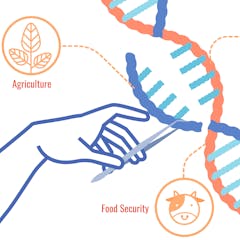
Articles on CRISPR
Displaying 41 - 60 of 119 articles

CRISPR technology is continually improving to make it more specific, but serious consideration should be given to when and how CRISPR is safe for gene editing.

Enterococcus faecalis can on pass its antibiotic resistant genes.

A growing international divide over cutting-edge medical research could worsen predatory practices, medical tourism and health inequality.

CRISPR technology could have momentous effects if it’s used to edit genes that will be inherited by future generations. Researchers and ethicists continue to weigh appropriate guidelines.

The idea of CRISPR as scissors ignores an entire ecosystem of moving parts that are crucial for understanding the awe-inspiring, crazy thing scientists are trying to do when they attempt gene editing.

News of the gene-edited babies excludes images of the children’s mother. Cutting her out of the picture underscores the idea that the mother is obsolete and babies can be created in the lab.

Box jellyfish stings are excruciating and occasionally deadly. We have identified a common, cheap drug that is already on the market and which could be a treatment candidate with further development.

With Gottlieb’s departure from the FDA imminent, what should we expect from the FDA? How is it likely to regulate the still controversial genetically engineered foods?

CRISPR gene editing should learn from the Slow Food movement. Scientists must allow time for critical conversations and perfecting of techniques before rewriting the source code of humanity.

Four months ago a researcher claimed he had used the tool CRISPR to edit the genomes of twin girls. Now prominent researchers and ethicists are calling for a temporary halt to this sort of work.

According to current regulations, animals that have been genetically edited, like pigs or cows, are considered drugs. What are the consequences of such rules on American livestock and agriculture?

On average, important new lab techniques like CRISPR take 23 years to develop – but there is a public expectation that scientific breakthroughs occur quickly and efficiently.

You may not agree with using the gene-editing tool, CRISPR, to alter the DNA of human babies. But what about using it to engineer plants? Or wipe out one of the world’s most dangerous creatures?

Genome editing technology has, and will always have, limits. Limits that are related not to the technology itself but to the intrinsic complexity of the human genome.

Gene editing through CRISPR may have greater consequences than climate change or unleashing the energy of the atom.

The world seemed to be inching forward with CRISPR gene editing technology – but suddenly the forbidden fruit has been plucked, and some even worry that the CRISPR tree has been cut down.

Chinese researcher, Jainkui He claims to have created the world’s first genome-edited twins. Such action would pose unknown risks to the lives of these children and to humanity as a whole.

The announcement of the birth of babies with edited genes has been met by a deluge of scientific and ethical criticism. Public discussion focuses on risks and benefits – was breaking this taboo worth it?

A Chinese scientist has revealed he edited the DNA of twin girls born through in vitro fertilization. These girls are designed to be resistant to HIV. Is the edit a medical necessity or an enhancement?

We don’t know anything about the health of the baby girls who are reported to have been born. But it’s clear scientists around the world are shocked.
